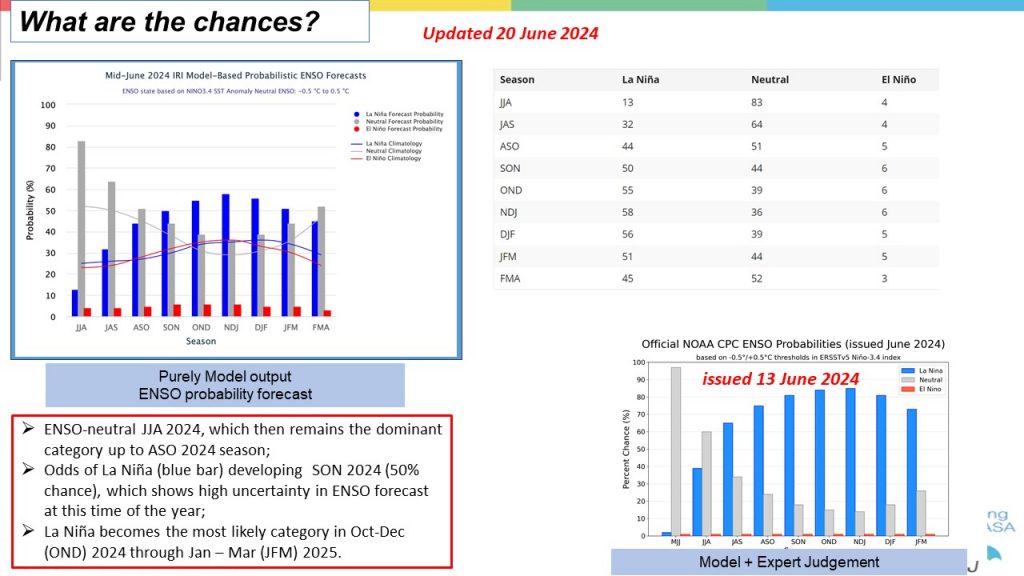
THE PHILIPPINE Atmospheric, Geophysical and Astronomical Services Administration (PAGASA) forecasts a 50% likelihood of La Niña developing between September and November this year. season, he
Contrary to the previous press release that declared La Niña may occur between July and September, it will be delayed in the last quarter of the year.
during the 173rd Climate Forum on June 26, Ana Liza Solis, PAGASA Climate Monitoring and Prediction section chief, said, “Although lumalaki ang probability ng pagkakaroon ng La Niña sa Oct-Dec up to Nov-Jan, ay nakikita natin na hindi more than 60 or 70%, that is why nandito pa rin tayo sa La Niña watch.”
She added the uncertainty is attributed to very strong El Niño, making the equatorial Pacific currently under ENSO (El Niño-Southern Oscillation) -neutral conditions.
“This means the ocean is very well-mixed with little difference in temperature. That is why nagdedecide pa ang ating ocean kung ito ay towards cooling, or ENSO neutral o magtutuloy na hindi siya lalamig,” Solis said.
PAGASA continues to monitor the weather toward the end of the year as ENSO-neutral will persist through August- October.
Solis said a weak La Niña is seen towards the end of the year, citing model-based predictions.
Last June 4, the state weather bureau issued a statement El Niño had ended and ENSO-neutral conditions are now present over the tropical Pacific.
ENSO-neutral condition as per PAGASA is the absence of El Niño and La Niña and marks the transition between the two.
Solis stressed that rain-bearing weather systems may affect the country from July-December include easterlies, localized thunderstorms, shear lines, frontal systems, southwest monsoon (Oct-Dec), intertropical convergence zone, tropical cyclones, northeast monsoon, and ridges of high-pressure areas.
